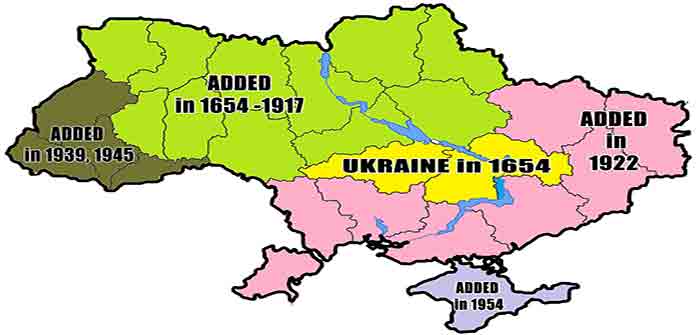
by Bernhard at Moon of Alabama
On February 24, the day Russian troops crossed the borders to Ukraine, I wrote about the potential end state of the operation:
Looking at this map I believe that the most advantageous end state for Russia would be the creation of a new independent country, call it Novorussiya, on the land east of the Dnieper and south along the coast that holds a majority ethnic Russian population and that, in 1922, had been attached to the Ukraine by Lenin. That state would be politically, culturally and militarily aligned with Russia.
This would eliminate Ukrainian access to the Black Sea and create a land bridge towards the Moldavian breakaway Transnistria which is under Russian protection.
biggerThe rest of the Ukraine would be a land confined, mostly agricultural state, disarmed and too poor to be build up to a new threat to Russia anytime soon. Politically it would be dominated by fascists from Galicia which would then become a major problem for the European Union.
On March 19 I revisited the question and added Kryvyi Rih (Kriwoi Rog in Russian), the yellow part of the map, to the list:
Novorossiya roughly includes the red and yellow areas in the above map. It also includes the valuable Soviet developed iron ore mines and factories of Kryvyi Rih west of the Dnieper river.
I especially want to point out that I spoke of a “mostly agricultural state, disarmed and too poor to be build up to a new threat to Russia anytime soon.”
I could say that because nearly all of Ukraine’s resources and industries are in the south and east. If Russia takes those or creates the new state of Novorossiya the ‘rest of Ukraine’ will be mostly de-industrialized. Also of note is that the south and east include most of the famous black soil areas, which consists of a half meter deep humus layer that allows for good agricultural results without using much fertilizers.
Much of the steel and heavy machine industries in the south and east have been neglected over the last 30 years under Ukrainian rule or were destroyed during the wars that are raging since 2014. It will require very large investments to revive them but the potential profits will be great.
Nearly half a year after I wrote about it, the Washington Post, with the help of some Canadians, is catching up on the issue:…
Continue Reading
